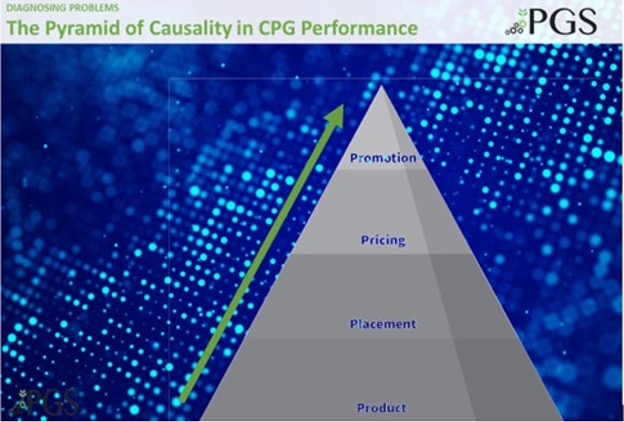The Pyramid of Causality in CPG Growth
Deep in my book – Ramping Your Brand – I have a long, somewhat torturous chapter on how to diagnose your brand’s early-stage performance. This is for Phase 2+ brands primarily.
However, the main point I make is that Product is the number one source of your growth rate. Its design and category positioning contains most of your upside in terms of scale and growth rate.
The last amount of growth and the lowest contributor to your growth rate is Promotion (framed here as consumer marketing primarily), not price games at the shelf. This includes DTC, as weird as that sounds (since you need to do marketing to generate any traffic at all). In traditional CPG circles, some say that at most 30% of legacy brand annual sales are attributable to marketing activities. This number is probably higher than the % for early-stage sales. I don’t really know. I suspect the growth contribution from promotion is lower because a low awareness emerging brand does not generate as much ‘reminder’ based sales velocity from advertising. You are relying primarily on initial awareness building and household/customer growth.
And most creative for early-stage brands that I see is content from their sell-sheets re-purposed as an ‘ad.’ This tends to focus entirely on attribute-based incrementality because buyers look for this.
However, consumers buy outcomes, not attributes. Your cool attributes may be rare and interesting, but your marketing has to tell a story about reaching outcomes through the consumption of your products. If the attribute is inherently modern and not overhyped or weird, sales will follow the marketing.
Ultimately, founders need to have a brand whose baseline growth happens automatically without marketing. Then, they can use marketing to accelerate. Only, though, if they have superb creative storytelling. Get everything else right before investing a ton in marketing.
